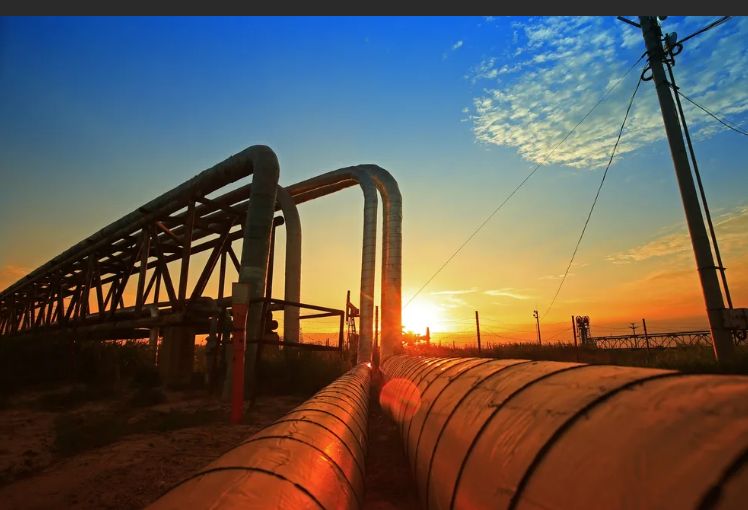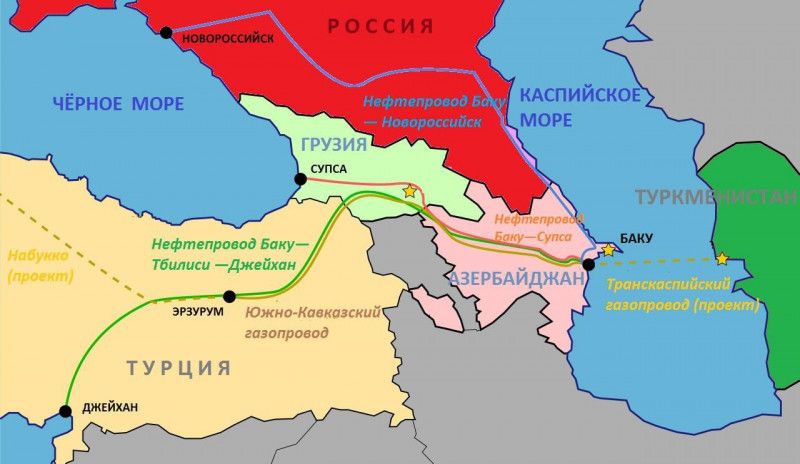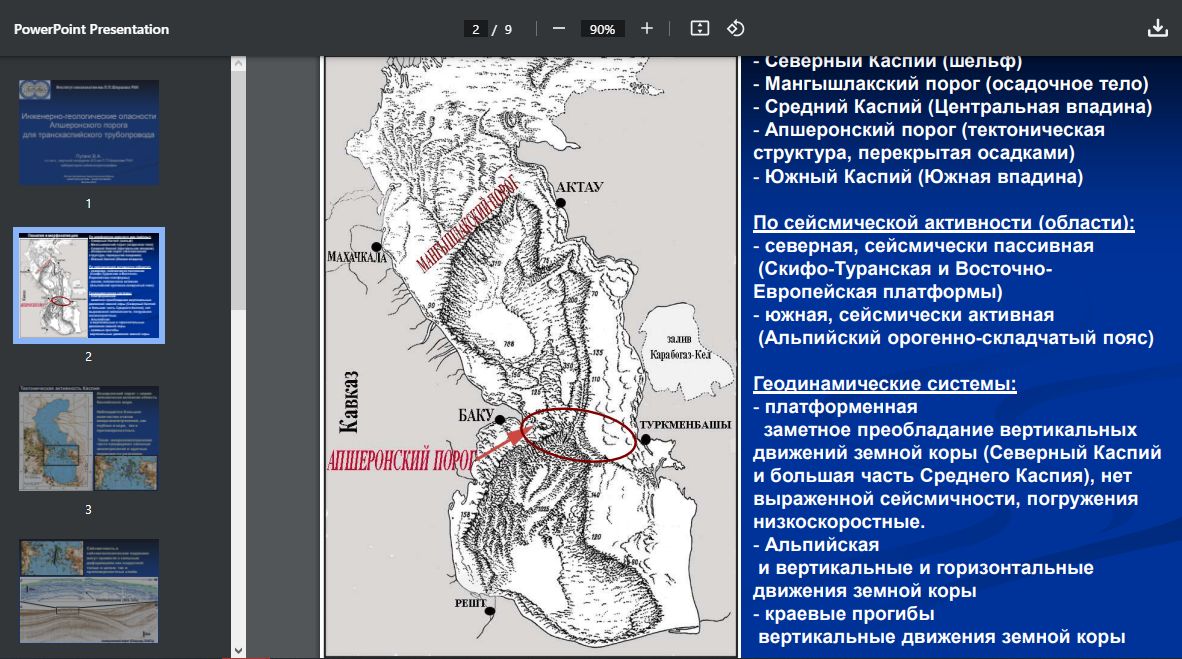
Engineering-geological hazards of the Apsheron threshold
American company Trans Caspian Resources (TCR), founded in April 2021 of the year, announced its intention to start construction of an underwater pipeline, that "ensure the transportation of natural gas from the huge reserves of Turkmenistan through the Caspian Sea to Azerbaijan and, perhaps, further to Europe".
The company is headed by former US Ambassador to Turkmenistan and Chairman of the Board OpenStreetMap Foundation Alan Mastard. This foundation partners with the US National Geospatial-Intelligence Agency (National Geospatial-Intelligence Agency) and assists the CIA in compiling The CIA World DataBank.
Trans Caspian Resources (TCR) proposes to Turkmenistan instead of the once rejected Trans-Caspian gas pipeline (TCG) implement the project of the Trans-Caspian Interconnector - a smaller gas pipeline in the direction of Azerbaijan.

“We propose a less ambitious project, than the Trans-Caspian gas pipeline. This is a medium-capacity line for the delivery of natural gas from offshore wells of Turkmenistan in the Caspian Sea to the already existing infrastructure of Azerbaijan.”, – said Alan Mastard, speaking at the XXVI International Conference "Oil and Gas of Turkmenistan".
According to him, project, which is valued at $500-800 million, will make it possible to use the potential of the existing infrastructure to the maximum and provides for much smaller investments compared to the Trans-Caspian gas pipeline.
Up to 12 bcm. “The Caspian Interconnector is a rather simple project, which can guarantee the export of Turkmenistan 10-12 billion cubic meters of natural gas in just 24 month", Mustard noted..
It is planned to lay a pipeline from the Turkmen offshore field Magtymguly through the middle of the Caspian Sea to the giant Azerbaijani oil field Azeri – Lamp – Gunashli (ACHG), which is developing British Petroleum.
Commenting on this information, Director of the Third Department of the CIS countries of the Ministry of Foreign Affairs of the Russian Federation Alexander Sternik, in an interview with the Interfax agency, said, that the United States and its allies are politicizing energy cooperation, promote such projects, as a gas route from Turkmenistan through Turkey to Europe to reduce the share of Russian energy carriers in the European market.
“Our energy and transit-transport cooperation with Turkmenistan and Turkey is open and mutually beneficial. true, The politicization of the energy topic has recently made itself felt, not without the filing of the United States and their associates ", - Sternik said in an interview with Interfax, answering the question, Does Moscow have concerns about reports that, that Turkey is trying to lure Turkmenistan into a union of Turkic states, to take control of the gas route from Turkmenistan to Europe.
According to him, The United States and its like-minded people are "empty talk" about the threats to the energy security of the European Union from Russia. "Different types are offered. “project projects”, aimed at reducing the share of Russian energy resources in European markets. Wait and see, Will the authors of these ideas be able to, as the saying goes, “with numbers in hand” prove the superiority of their alternatives over our product", Russian diplomat said.
Last year on site The Heritige Foundation published an article by US military intelligence veteran Luke Coffey, in which he insisted on the construction of a gas pipeline along the bottom of the Caspian as "the only cost-effective way to deliver gas from Central Asia to Europe without passing it through the territory of Russia or Iran".

In this publication of an American intelligence officer, the idea of u200bu200bbuilding a "Caspian interconnector" was expressed as “connecting link between the Azeri-Chirag-Guneshli offshore field in Azerbaijan and the Livanov Bank offshore gas field in Turkmenistan”.
Describing the benefits of building such an underwater pipeline, Luke Coffey claimed, that Europe badly needs it, which “actively looking for alternatives to Russian energy resources”.
Actually, Europe no longer needs Turkmen gas. The European market is well connected to producers through pipelines and LNG terminals.
Besides, it may be too late to export Central Asian gas to the European market. First of all, multi-billion investment needed for trans-Caspian subsea pipeline. However, the European Investment Bank 2022 will no longer fund projects, related to fossil fuels.
EU moves towards decarbonisation, which in the long run will reduce the demand for natural gas. 21 October 2021 the twentieth meeting of the Joint Committee "Turkmenistan – European Union” via videoconferencing. noted, that the European Union is "Turkmenistan's fourth largest trading partner, a bOmost of Turkmen exports to Europe are hydrocarbons. In this regard, the Turkmen side was warned, that the EU and other partners have adopted a strategy to reduce the dependence of the economy on hydrocarbons and will reduce their imports”.
Deputy head of the Russian Foreign Ministry Grigory Karasin justified the negative Russian position on the Trans-Caspian gas pipeline, among other things, "potential accidents or disasters". The thing is, that the Caspian from an ecological point of view is a very complex body of water and earthquakes regularly occur in its deep part between Turkmenistan and Azerbaijan. Any accident on the gas pipeline laid along the bottom of the Caspian Sea will cause irreparable damage to the ecosystem of the entire sea.
There are seven local zones of especially high seismicity in the Caspian Sea. The largest of them coincides with the eastern section of the Terek-Caspian deep fault. Most often strong earthquakes occur there.. The smaller area is located within the Apsheron Sill - on the underwater section of the same trough. Devastating tsunamis have repeatedly been observed in areas of increased seismicity, that is, anomalous fluctuations in sea level.
Russian scientists E. Kulikov, AND. Kuzin and O. Yakovenkov in the monograph "Tsunami in the Central part of the Caspian Sea", published in 2014 year, mark, that tsunamis in the Caspian Sea and the degree of risk they cause are not well understood to date. According to them, currently there is reliable information about 14 tsunami in the Caspian Sea, that took place in different years. The probability of such tsunamis is especially high in the area of the Apsheron threshold, latitudinal submarine ridge, located between the cities of Baku and Turkmenbashi.

AT 2012 Russian Institute of Oceanology RAS named after. PP. Shirshova published a study under the telling title "Engineering and geological hazards of the Apsheron threshold for the trans-Caspian pipeline", which states, that in this section of the Caspian seabed there is a “large number of micro-earthquake foci, which often precede strong earthquakes and large shifts along the faults ". The main danger on the Apsheron threshold, scientists write, is an instant pipeline rupture due to unpredictable seismic disasters.
Caspian Interconnector, the construction of which is being pushed by the United States, will pass just along these seismically hazardous zones of the seabed along the Apsheron threshold.
And who will be responsible for the possible consequences of the destruction of the underwater gas pipeline?
Vladimir PROKHVATILOV











